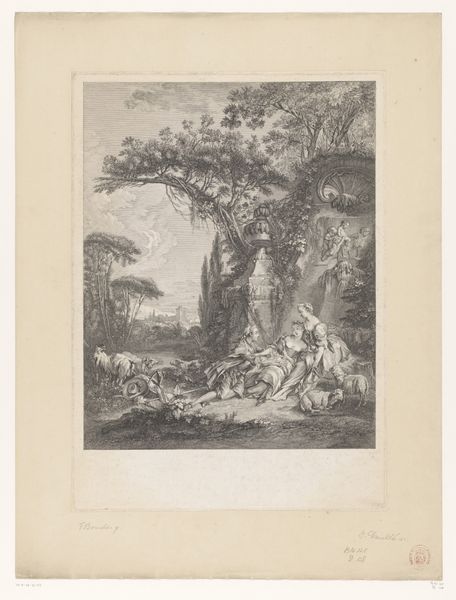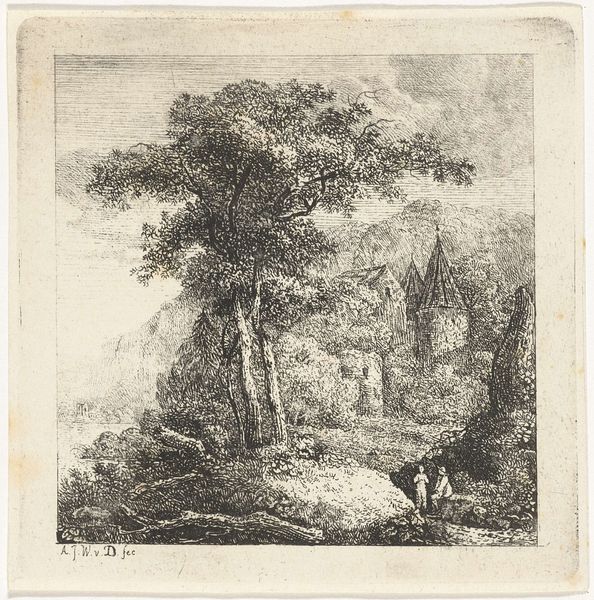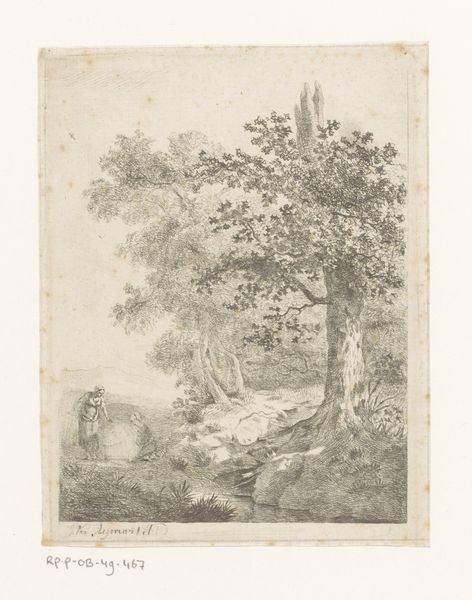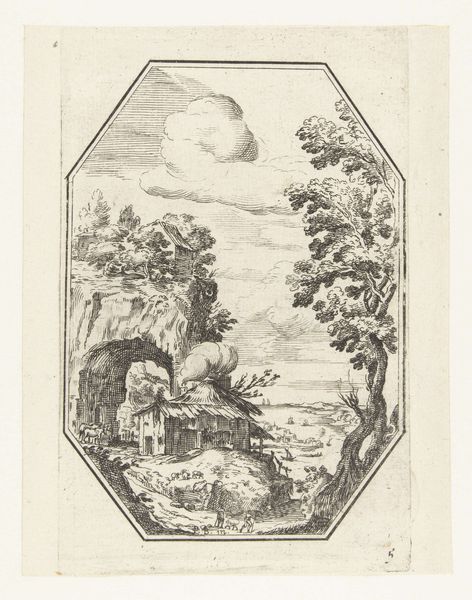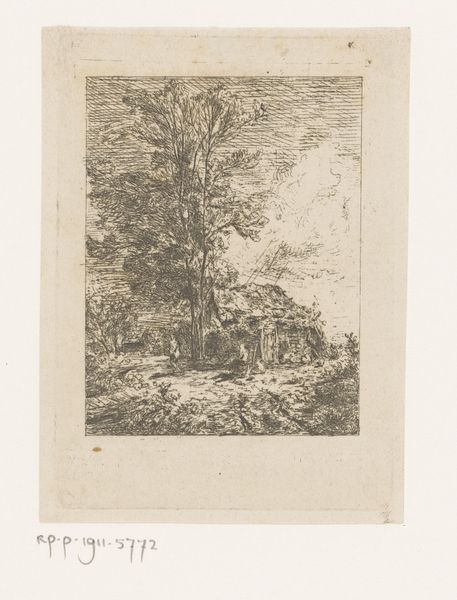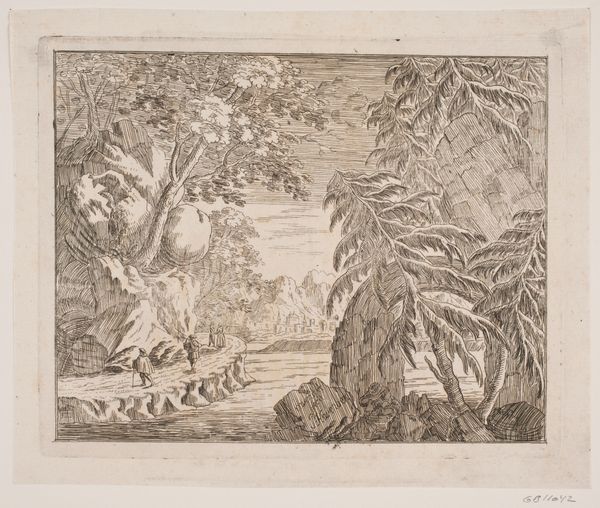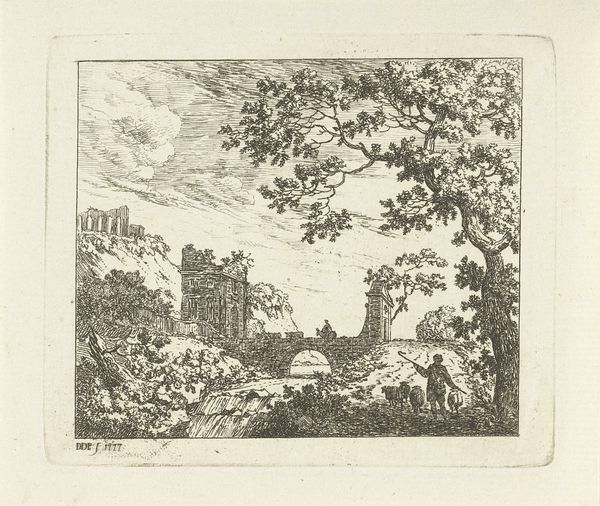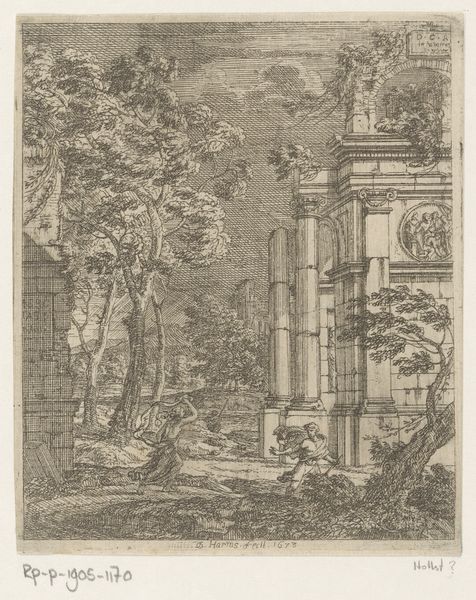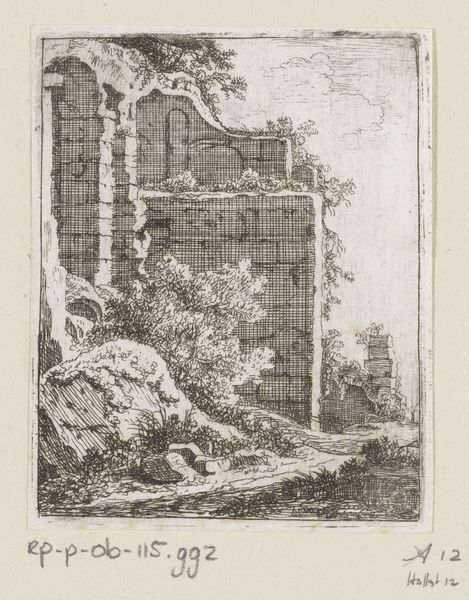
drawing, print, etching, paper
#
drawing
# print
#
etching
#
landscape
#
classical-realism
#
etching
#
paper
#
history-painting
Dimensions: 352 × 269 mm (image); 405 × 290 mm (plate); 465 × 348 mm (sheet)
Copyright: Public Domain
Curator: Welcome. We're standing before Louis Joseph Masquelier's "The Fountain in the Ruins," an etching and print on paper completed around 1765. What are your initial thoughts? Editor: A ghostly, delicate dream of a place. Like something from a long-forgotten memory or the stage set for a myth. There’s a quietness here, despite the imagined life teeming in those ruins. Curator: Absolutely. Masquelier, although perhaps not as well-known as some of his contemporaries, captured the prevailing fascination with classical antiquity during the 18th century. Works such as this reflect broader societal trends in art collecting, architectural design, and garden landscaping—all meant to evoke a grandeur of the past. Editor: The way he renders the crumbling stone is incredible. The lines are so light, airy almost. It’s as if the ruins themselves are exhaling a collective sigh of what once was. Does that sculpture on the fountain look familiar to you? Curator: I see what you mean about the lightness, the ethereal quality is remarkable. Regarding the statue, many artists during this period drew inspiration from specific Roman sculptures but often would stylize those renditions or introduce elements of their own invention. We observe a confluence of ancient historical references. Editor: I keep coming back to the mood here. The piece balances a melancholy acceptance with a celebration of endurance. Like those ancient structures continue to invite and serve those who appreciate their history. The past as a kind of park space. What kind of person do you imagine living here and encountering a setting such as this? Curator: An excellent point! This work serves as both art and historical commentary. We observe themes of history being recycled for diverse audiences. Masquelier was likely hoping to capture a shared cultural memory by depicting familiar structures. I believe such artworks played a crucial role in shaping the modern identity. Editor: Looking at it, I feel as though I want to be that person! Just existing amongst echoes, the water tinkling, history just casually dripping from every crevice. So inspirational and hopeful at the same time. I guess that's where art speaks and then, finally, we listen. Curator: Indeed, a work of art invites its viewers into the cultural narrative. A quiet testament to art’s profound social functions, wouldn't you agree? Editor: Couldn't agree more. Time to dream again then.
Comments
No comments
Be the first to comment and join the conversation on the ultimate creative platform.


